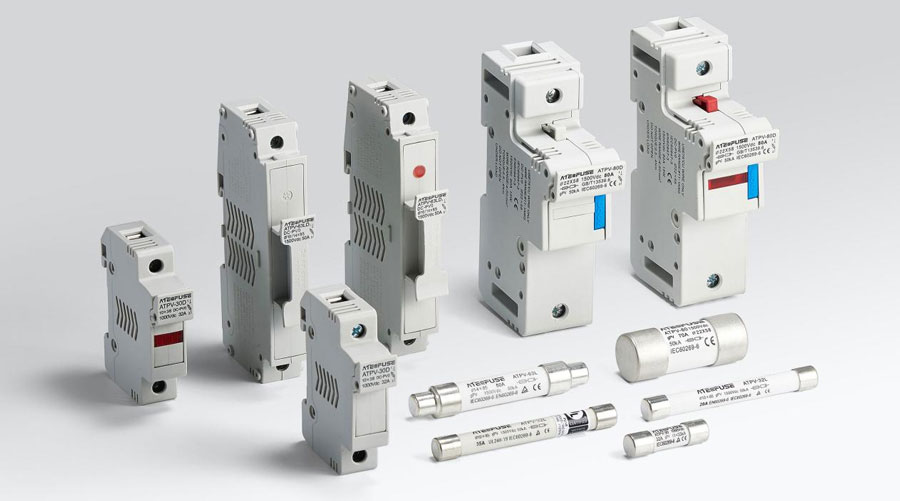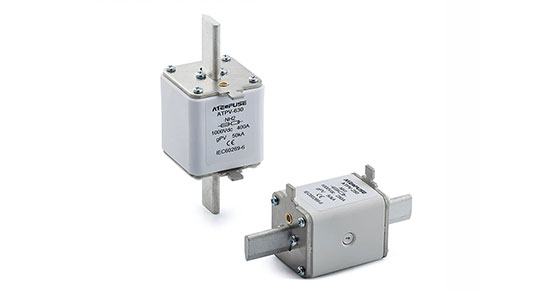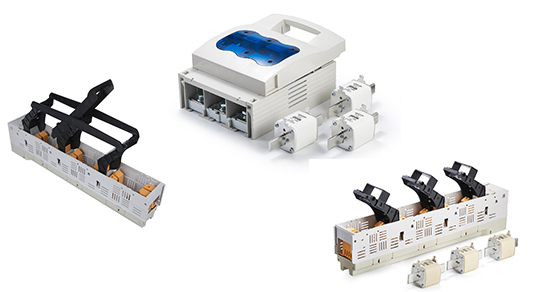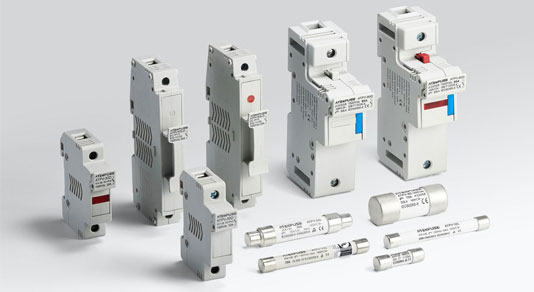Fuse Selection – How to Confirm Voltage, Current, and Size
In the safety design of photovoltaic systems, new energy vehicles, communication, and energy storage, there is a core component with overload/short-circuit protection——fuse.
Its selection is directly related to the stable operation and safety of the entire system. Therefore, we must be very cautious when choosing a fuse. For voltage, current, size, and applicable standards, it is essential to know how to confirm them.
Next, we will introduce the fuse selection logic from four aspects: rated voltage, current capacity, size, and standards.
Confirm Rated Voltage
What is the rated voltage? It refers to the maximum voltage that equipment or a system can withstand and operate safely under for a long time during normal operation. Therefore, voltage is the primary parameter in fuse selection, ensuring that it can safely break the maximum voltage of the circuit.
In the circuit, the fuse has an important role: it must withstand normal operating voltage and quickly and safely cut off current when a short circuit or overload occurs. If the voltage rating is too low, it may fail to extinguish the arc during a fault, resulting in continuous arcing, which in severe cases could damage equipment or even cause a fire.
In general, DC circuits and AC circuits have different voltage requirements. Because DC lacks a zero-crossing point, it is more prone to sustained arcing when breaking, making arc extinction more difficult. Therefore, DC systems have stricter voltage requirements. For example, in photovoltaic systems, common voltages can reach 1000V or even 1500V. In such cases, DC fuses specifically designed for photovoltaic applications must be selected, ensuring that the fuse’s rated voltage ≥ the system/equipment’s maximum operating voltage.
Confirm Rated Current
The current parameter determines whether the fuse can operate reliably under rated working conditions. The fuse’s rated current must match the load current in the circuit — it should withstand normal operating current while being able to quickly blow and cut off the circuit under overcurrent conditions.
When selecting, factors such as continuous working current, ambient temperature, and pulse current must be considered. Generally, the recommended rated current is 1.6–2.5 times the normal working current of the circuit. This ensures the fuse will not blow during normal operation but will act quickly when abnormal current increases. It should also be noted that a fuse’s current-carrying capacity decreases as ambient temperature rises, so in high-temperature environments, a higher-rated current model may be required.
Confirm Size and Specifications
For different applications, fuse size and mounting methods vary.
Taking common photovoltaic fuses as an example, typical sizes include ATPV-30/10×38mm, ATPV-63/14×51mm, and ATPV-125/22×58mm, which need to be used with matching fuse holders.
In practical selection, refer to the equipment installation manual or related technical documents to determine the required fuse size and specifications, including length, diameter, and pin spacing, ensuring compatibility.
Confirm Certifications and Standards
In the fuse selection process, it is also necessary to check whether the fuse meets relevant international or industry standards, such as IEC, UL, CE, or GB. These certifications not only indicate that the product has passed strict performance and safety testing but also ensure that it is widely accepted by equipment manufacturers and system integrators worldwide.
For photovoltaic/energy storage and new energy vehicle applications, there are often special requirements (e.g., IEC 60269-6 for PV fuses). Choosing a fuse that complies with certification standards reduces system safety risks and ensures long-term stability in actual applications.
AITE Certificate Wall
Continuously updating...
Conclusion
In summary, fuse selection requires consideration of multiple factors. We have outlined the main requirements and methods as follows:
- Rated Current: Select 1.6–2.5 times higher than the normal working current of the circuit
- Rated Voltage: The fuse’s rated voltage must be greater than or equal to the circuit’s operating voltage
- Fuse Characteristics: Choose fast-acting or time-delay depending on load type
- Breaking Capacity: Must exceed the possible maximum short-circuit current
- Environmental Factors: Consider ambient temperature and installation method
- Size and Standards: Ensure fuse size matches the holder and complies with relevant standards
Visit our website at https://www.aitefuse.com today to discover how we can create value together.
We stand ready to support your success. For specific quotes and partnership opportunities, please don't hesitate to contact our team.







